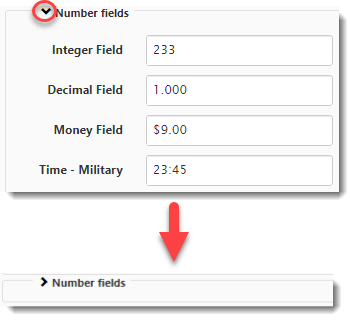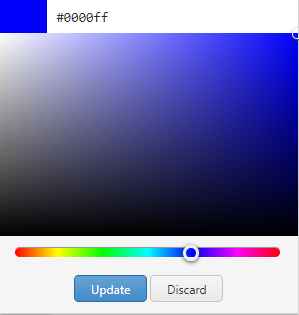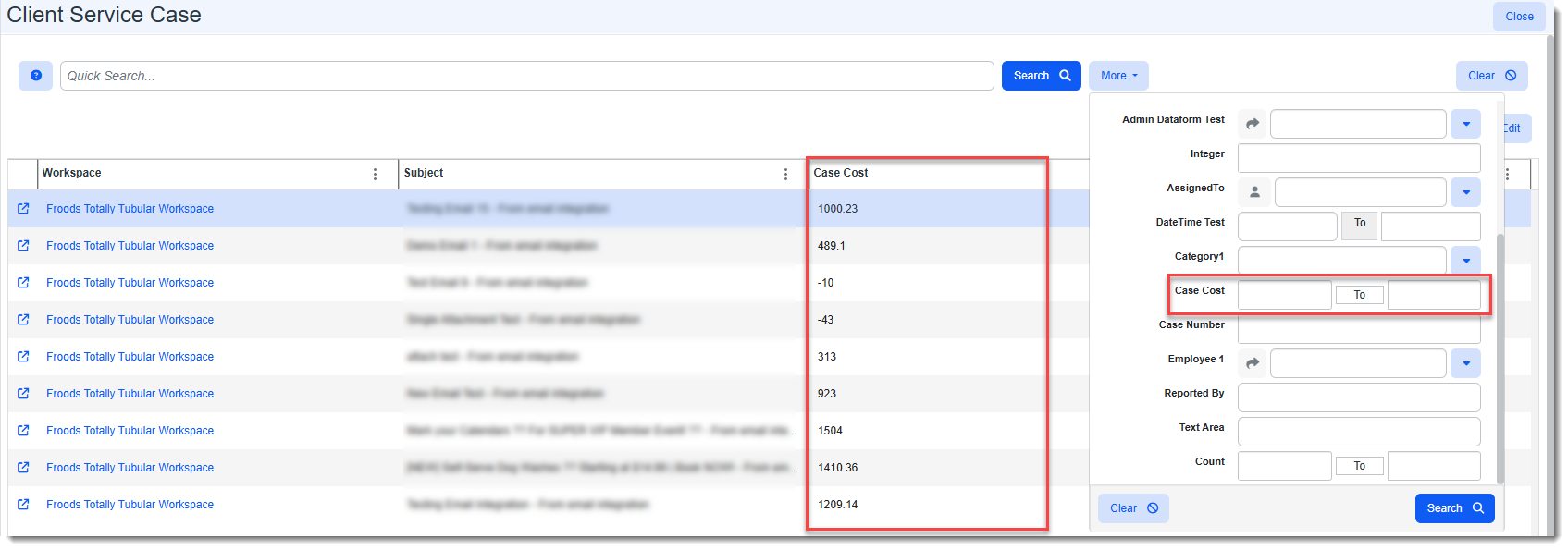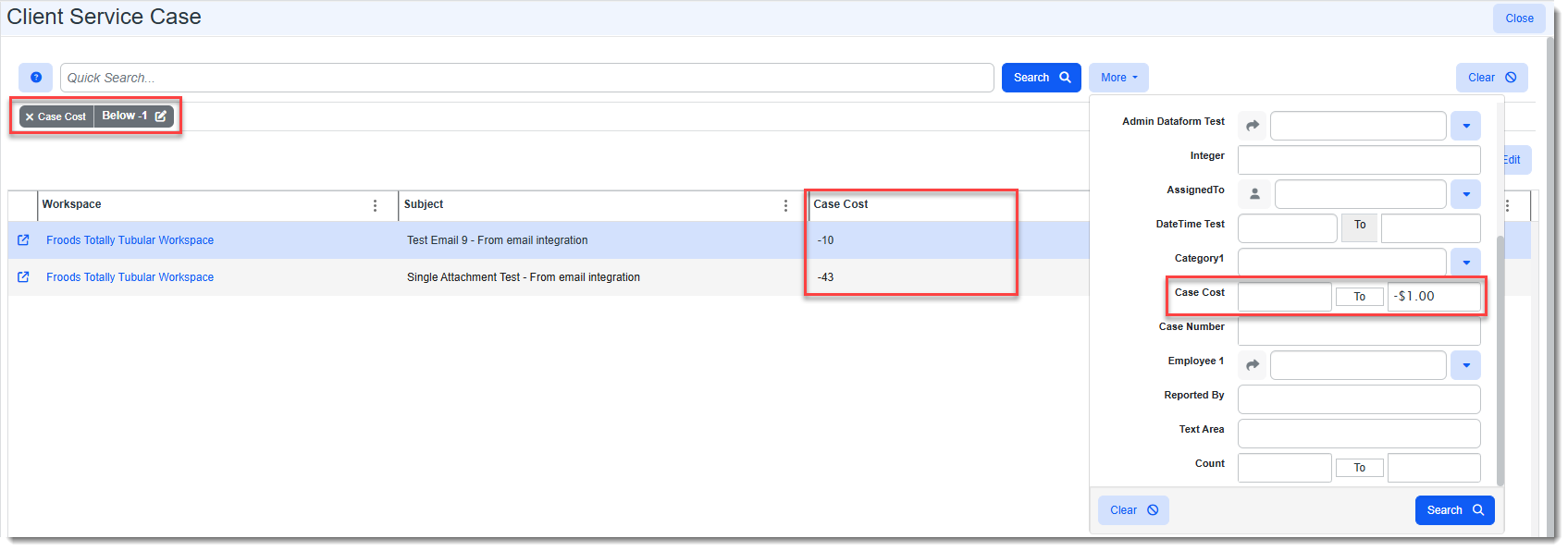Dataform fields contain information that you want to store and track. The maximum number of fields allowed on a dataform is 250. When this limit is reached, the ![]() (New) button is disabled, and a message displays, "Only 250 fields can be added to a single dataform." If you need more than 250 fields, consider using a dataform tab or add another single dataform link.
(New) button is disabled, and a message displays, "Only 250 fields can be added to a single dataform." If you need more than 250 fields, consider using a dataform tab or add another single dataform link.
To add fields:
| 1. | Go to System Admin |
The Dataform Admin dashboard opens.
| 2. | From the list, select an entry and click Edit or click |
The Dataform Properties form opens.
| 3. | In the Action Center, click Fields. The Fields list of the dataform displays. From here, you can Open, Delete, and Add (New) fields. |
| 4. | Click |
The New Field form opens.
Note: You cannot configure a dataform (single or multiform) to contain more than 250 fields. When this threshold is reached, a message displays, and the New button is inactivated.
| 5. | Use the following field descriptions to continue the configuration. (Fields displayed may vary by Element Type.) |
|
Element Type |
Determines the type of data you store in this field. ClientSpace has a full array of different datatypes. The most commonly used datatypes can be found in the topic Configuring Dataform Datatypes. For an in-depth look at the Lookup datatype, see Configuring Lookups. |
|
Field Set |
Field sets are not data entry fields, and no corresponding SQL Server field is created when a new fieldset data type is created. Field sets act as an organization container for other fields. The use of fieldsets typically makes the layout and organization of a data form significantly better. |
|
Field Set Default |
Allows you to control whether fields within a field set are visible or collapsed within the field set container when the form loads. Note:
You can:
|
|
Field Label |
The field label is displayed on the dataform. By default, the underlying field name is set to the field name with any spaces or special characters removed. Click
|
|
Field Name |
The name of the field that is created on the SQL table. By default, the field label is stripped of its spaces and special characters and auto-populates the Field Name. The appropriate prefixes and suffixes are also automatically added based on the selected datatype.
The field name can be overridden (up to the point of saving it) as needed and can be set to anything that is accepted by SQL Server as a valid field name. Duplicate field names are not accepted.
Note: We recommend editing an field name that is, for instance, a complete sentence with the label, such as: “Are union workers or employees under collective bargaining agreements employed?" However, we do not recommend removing the auto-generated prefixes and suffixes used to distinguish a field's datatype. For more information see Dataform Field Naming Standards.
Field labels are often duplicated in developing large dataforms. As duplicate fields are created, you must modify the field name to make it unique to save the field. After the field is saved the first time, the field name CANNOT be changed.
Carefully map out your field naming standards before creating dataforms. ClientSpace uses a standard naming convention when naming a field based on the datatype of the field. It is a recommended best practice to adhere to these same conventions in your own field names. To review field naming conventions, see Dataform Field Naming Standards. |
|
Row |
The row property determines the vertical ordering of fields and fieldsets. Fields that are within a fieldset are ordered within that fieldset. Though the sort uses a standard numeric order, it is recommended to set rows in increments of ten. This allows for reordering fields or adding fields between rows without reordering the entire form. |
|
Column |
The column property is hardcoded to dictate a two-column format. Technically, you can select the same row and column for more than one field, and they align alphabetically. However, this generally causes problems in the presentation of the dataform to the user. |
|
Field Behavior |
When ReadOnly is selected, the field cannot be edited. Normally, these fields are set automatically by business logic. When Required is selected, the field must be completed in order for the Dataform to be saved, unless the field is contained in a hidden field set. |
|
Length |
Specifies the maximum character length of the field entry. For example, if the Length property is set to 10, a user can only enter 10 characters for the field. If this property is blank, the system does not limit the character length of the field entry. This property is only displayed for the following datatypes: Text, Text-Wide, TextArea and Decimal. |
|
Search Operator |
Used to configure a module dashboard "Between" search on numeric datatypes (i.e., Integer, Decimal, Percentage, and Money) within a specified range or reapply the default "Equals" search functionality. When a "Between" search is configured, two fields for entering the search range are added to the More search of the associated module dashboard as shown in the example below of the Client Service Case module dashboard. Case Cost, a user-defined Money datatype field, has been configured as a "Between" search: Note:
Tips: |
|
Comment |
The text in Comment provides contextual help for dataform users. When comments are added to any dataform field, the info bubble next to the field label is enabled, and on hover, the info bubble displays the comment text in a pop-up. |
|
Description |
Use the Description field to specify how and where a field is used in ClientSpace. This can help with dataform field maintenance activities, such as:
This field has a 1000-character allowance. Note: Once you add Description text, you can view it from the Dataform fields list without needing to open the field properties record when you hover the mouse over the field name: Very long descriptions may be truncated. In those cases, you will need to open the field properties record to view complete details. |
|
Lookup Group |
The Lookup Group field displays in the Lookup Settings fieldset when you select an Element Type of Lookup Type Ahead (core), Lookup (core), Lookup Multiple (core).
Note: Once the Lookup Group field is populated, you can click the Jump to Related Form |
|
Filter Value |
The Filter Value field displays in the Lookup Settings fieldset when you select an Element Type of Lookup Type Ahead (core), Lookup (core), Lookup Multiple (core).
Filter Value allows you to filter the values in the specified Lookup Group by a single value. For instance, you are configuring a US States lookup group, you only want the list of values in it to contain southeastern states and you have set a filter of SE (for southeastern states) on the Lookup Details record of each of the southeastern states. In this scenario, users will see the following values when they open the US States drop-down list:
See Basic field filtering: Using the lookup Filter and dataform field Filter Value |
|
Filter Source |
The Filter Source field displays in the Lookup Settings fieldset when you select an Element Type of Lookup Type Ahead (core), Lookup (core), Lookup Multiple (core).
Filter Source allows you to filter dynamically, restricting the range of values displayed in a lookup list based on a selected value in another lookup field on the same form. You must specify the actual field name of the field in Filter Source instead of the field label name (i.e., luRegion instead of Region) in the Filter Source field.
Example: I select "Southeast" from the Region drop-down list and the US States drop-down list filters to display southeastern states.
In this scenario, users will see the following values when they open the US States drop-down list:
SeeAdvanced filtering: Using contents of another field and Filter Source |
|
Quick Search |
Selecting a value in this list adds the field to the Quick Search on multiform searches. Fields that link to other dataforms are not eligible for Quick Searches. Available options (quick search types) include Starts With, Equals, and Contains (% search). |
|
Org Category |
This setting is only available when the Element Type of the dataform field is Org Type Ahead. Selecting a value in this list filters the organization lookup list to organization records that match the specified category. EX: Brokers or Staffing. |
|
Orgs with Workspaces |
This setting is only available when the Element Type of the dataform field is Org Type Ahead. Setting this field filters the organization lookup list to organization records are associated with a workspace. |
|
Advanced Client Info |
This setting is only available when the Element Type of the dataform field is Org Type Ahead. This section is used enable settings to display additional workspace-specific information (if entered), such as making the Client Number, PEOID, and DBA display next to each value in the lookup list which can help users identify the correct company when there are similarly named companies in the list. |
|
Advanced Settings |
Used when there is a special script or special code entered in Advanced Settings for a dataform field. For instance, on the Benefit Parent Company field, there is code entered in Advanced Settings to filter the Org Type Ahead for this field to only display companies associated with a workspace and an Active Client Master record. Also see Configuring Dataform Datatypes. |
|
Form Searchable |
Is this one of the Search parameters available in a multiform list? This property can be set from the form list page or from within the field property page. |
|
Secured |
Secures the field and generates a security entity for the field in the format of gen_TableName_FieldName. For more in-depth documentation about using security entities in Role security, review Configuring Organization and Workspace Security. |
|
Active |
Determines if the field appears on the dataform. Deactivating a field is preferential to deleting it because deleting the field removes it from the underlying SQL table and erases the data. When you deactivate or hide a field, you retain the data for later use. |
|
Hidden |
This property is only available for Field Sets. When selected, the field and its children are hidden when a dataform record is viewed. |
|
Include in Document Index |
When selected, this option includes the dataform field when indexing documents attached to the form so that it can be used as part of the document search. |
|
Audit this field |
Marks the field auditable and is configured in System Admin > Advanced > Tables. |
|
Cloneable |
Marks the field as configurable when this dataform is created by Workflow Channels. Clearing this option initiates a validation to determine if this field is used by Workflow Channel dataform cloning. When used, a warning message is displayed with a link to the referenced items. Only published Workflow Channels are referenced. |
|
Allow Dataform Notification |
If selected, this field is included in a dataform notification when dataform subscribers are emailed. Updated fields appear in bold in this email. |
|
Triggerable |
Marks the field as available for use as a Triggering Field or as one of the Triggering Conditions when configuring Workflow Channels and Email Templates. When a field is marked (selected) as Triggerable, it displays in the field list on Email Templates and Workflow Channels.
Clearing this option initiates a validation to determine if this field is used as a triggering condition in an Email Template or Workflow Channel. When used, a warning message is displayed with a link to the referenced items. Only published Email Templates or Workflow Channels are referenced. This option cannot be cleared until the dependencies are removed. |
|
System |
When a developer user selects the System setting for a dataform field, a Global Admin user can edit the field but can not delete the field. A Global Admin user can view the System setting, but only a developer user can change this option for a dataform field. If a developer user deselects the System option for a dataform field, the system displays a message before the user confirms the change to the dataform field: This field is a system field that may be used in business logic. Making this field 'not system' may impact some functionality. |
|
SortDescending |
If the field displays as the first column in a search list and the SortDescending check box for the field is checked, the system defaults the sort order to descending for the column. When this option is unchecked, the sort order for the column is ascending. Note: This feature only applies to multiform searches. |
| 6. | Click Apply when you are done. |
Available field actions
When viewing the list of dataform fields, note the available actions:
|
Action |
Action label |
Description |
|---|---|---|
|
|
Open |
Opens the field properties for the highlighted field. |
|
|
Delete |
Deletes the highlighted field. For system fields, the Delete action is not available and displays as disabled. System fields can be easily identified because their field names do not begin with z_. Additionally, an error message may display and you may be prevented from continuing with the deletion of other dataform fields that are not system fields if the field is being used in other configurations that depend on the field. See Deleting, Inactivating or Editing Dataform Fields. |
|
|
New |
Adds a new field. |
|
|
Save |
Saves changes to the dataform fields list. |
|
|
Visualize |
Opens a preview of the dataform that illustrates how the fields display. |








